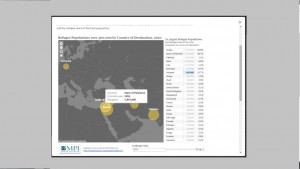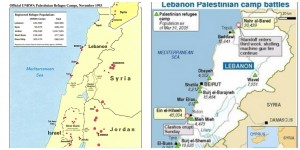1) The Act in subsection 2(1) defines a Convention refugee to mean any person who:
(a) by reason of a well-founded fear of persecution for reasons of race, religion, nationality, membership in a particular social group or political opinion,
(i) is outside the country of the person’s nationality and is unable or, by reason of that fear, is unwilling to avail himself of the protection of that country, or
(ii) not having a country of nationality, is outside the country of the person’s former habitual residence and is unable or, by reason of that fear, is unwilling to return to that country, and
(b) has not ceased to be a Convention refugee by virtue of subsection (2),
but does not include any person to whom the Convention does not apply pursuant to section E or F of Article 1 thereof, which sections are set out in the schedule to this Act.
Subsection 2(2) of the Act provides that:
(2) A person ceases to be a Convention refugee when
(a) the person voluntarily reavails himself of the protection of the country of the person’s nationality;
(b) the person voluntarily reacquires his nationality;
(c) the person acquires a new nationality and enjoys the protection of the country of that new nationality;
(d) the person voluntarily re-establishes himself in the country that the person left, or outside of which the person remained, by reason of fear of persecution; or
(e) the reasons for the person’s fear of persecution in the country that the person left, or outside of which the person remained, cease to exist.
2) Immigration and Refugee Protection Act, s. 96:
A Convention refugee is a person who, by reason of a well-founded fear of persecution for reasons of race, religion, nationality, membership in a particular social group or political opinion,
- (a) is outside each of their countries of nationality and is unable or, by reason of that fear, unwilling to avail themself of the protection of each of those countries; or
- (b) not having a country of nationality, is outside the country of their former habitual residence and is unable or, by reason of that fear, unwilling to return to that country.
The definition of a convention refugee is no different here than what it states to be in the 1957 Convention.
3) Convention refugee – a person who meets the refugee definition in the 1951 Geneva Convention relating to the Status of Refugees. This definition is used in Canadian law and is widely accepted internationally. To meet the definition, a person must be outside their country of origin and have a well-founded fear of being persecuted for reasons of race, religion, nationality, membership of a particular social group or political opinion.
Another term for convention refugee is protected person ;according to Canada’s Immigration and Refugee Protection Act, a person who has been determined to be either (a) a Convention Refugee or (b) a person in need of protection (including, for example, a person who is in danger of being tortured if deported from Canada).
Canadian Council for Refugees
http://ccrweb.ca/en/glossary (Accessed October 26, 2014)
4) Refugees: People who are forced to flee their homes due to persecution, whether on an individual basis or as part of a mass exodus due to political, religious, military or other problems, are known as refugees.
Refugees and Displaced Persons
http://www.hrea.org/index.php?base_id=153 (Accessed December 9,2014)
1) The number of Convention Refugees inhabiting in the State of Palestine camps vs. the number of convention refugees in Lebanon camps in 2010.

2) Comparison of refugee camps within Lebanon in 1993 vs. 2005. In comparison to example 1, Palestinian refugees in Lebanon within 12 years increased by 100,000+/-.

Case Law
Status of Convention Refugee attained upon presenting proof of persecution within all countries of inhabitance.
X. v. Canada (Immigration and Refugee Board), 2001 CanLII 26842 (CA IRB), <http://canlii.ca/t/1t5st> retrieved on 26 Oct. 2014
Reasons and Decision behind why one may not be considered a convention refugee
Bayat v. Canada (Minister of Citizenship and Immigration), [1999] 4 FCR 343, 1999 CanLII 9354 (FCA), <http://canlii.ca/t/4lql> retrieved on 26 Oct. 2014.
Bayat v. Canada (Minister of Citizenship and Immigration), [1999] 4 FCR 343, 1999 CanLII 9354 (FCA), <http://canlii.ca/t/4lql> retrieved on 26 Oct. 2014. https://www.canlii.org/en/ca/fca/doc/1999/1999canlii9354/1999canlii9354.html?searchUrlHash=AAAAAQAuSW1taWdyYXRpb24gYW5kIFJlZnVnZWUgUHJvdGVjdGlvbiBBY3QsIHMuIDk2IAAAAAAB
Immigration and Refugee Protection Act, SC 2001, c 27, <http://canlii.ca/t/529s2> retrieved on 26 Oct, 2014
Migration Policy Institute tabulation of data from the UNHCR Statistical Online Population Database, United Nations High Commissioner for Refugees (UNHCR). Data extracted: 26 Oct. 2014. Web. http://popstats.unhcr.org/PSQ_POC.aspx
“Refugees and Immigrants: A Glossary.” Canadian Council for Refugees. Web. 26 Oct. 2014. <http://ccrweb.ca/en/glossary>.
X. v. Canada (Immigration and Refugee Board), 2001 CanLII 26842 (CA IRB), <http://canlii.ca/t/1t5st> retrieved on 26 Oct. 2014.https://www.canlii.org/en/ca/irb/doc/2001/2001canlii26842/2001canlii26842.html?searchUrlHash=AAAAAQAUcmVmdWdlZSBmcm9tIGxlYmFub24AAAAAAQ